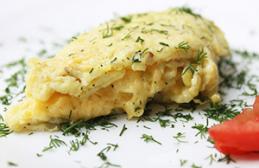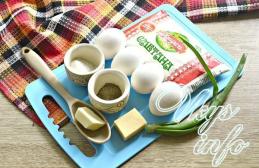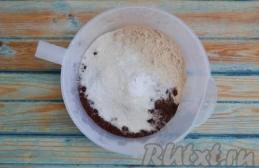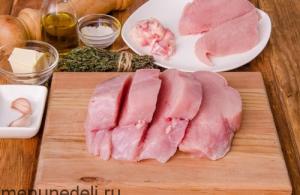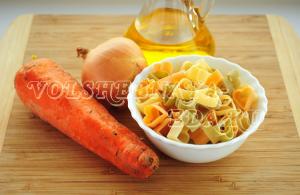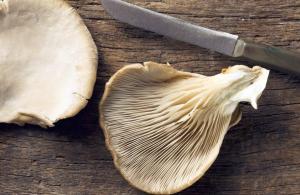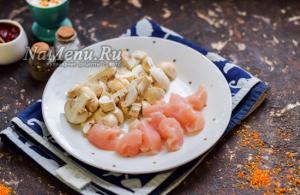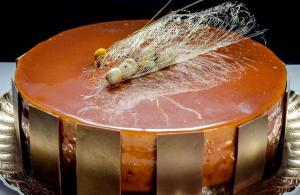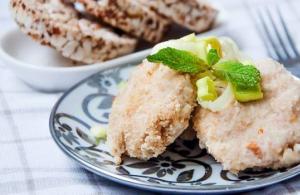Traditional Georgian bread is an integral part of any feast. Bread in Georgian is “puri”, and it is baked in special clay ovens - “tone”, heated to 400 degrees. The dough pieces are stuck directly onto the walls of the “tone” and baked very quickly.
Georgian bread comes in various shapes: round, oblong, with rounded corners - “dedis puri” (mother’s bread), and “shotis puri” - diamond-shaped, with elongated ends.
Today I want to tell you how to prepare diamond-shaped Georgian bread, in the form of a saber "shotis-puri" at home. According to experts, the shape of such bread did not appear by chance - it was convenient to take on military campaigns. That is why it is also called the bread of warriors. It's easy to bake and cools down very quickly.
To prepare Georgian shoti bread (shotis-puri) you will need a simple set of ingredients: water, yeast, salt and flour. Since home ovens cannot heat up to 400 degrees, we will bake the bread at 250 degrees. Of course, we won’t get the same result as in a special “tone” oven, but we will try to get an approximate version.
Shotis puri, prepared at home, turns out very tasty. It has a crispy crust and a very soft, porous crumb.
To prepare Georgian bread, prepare the necessary ingredients.
Pour the yeast into warm water, stir and leave for 5-10 minutes so that it starts up.


Knead the dough. The main thing is that it does not turn out too steep, so it is better to add flour in parts. The dough should be soft and tender, but at the same time completely pull away from your hands. Gather the dough into a ball and place in a bowl, cover the bowl with cling film and leave in a warm place for 1.5-2 hours.

After time, the dough will rise well and increase in volume.

Divide the dough into two parts. Roll each piece of dough into a log, cover with a towel and leave for another 15 minutes.

Then give the workpieces a more elongated look (as in the photo).

Then stretch the elongated loaf a little wider to form a diamond shape. Make a hole in the center through which air will escape. Leave the pieces to proof for another 20 minutes, covering with a towel.

Bake Georgian bread in a well-heated oven at a temperature of 240-250 degrees for about 10-15 minutes.

Remove the finished flatbreads from the oven and wrap them in a towel.

Georgian shoti bread (shotis-puri), prepared at home, turns out very tasty. It can be served hot or chilled.

The crust of this bread is crispy, and the crumb is porous and soft.

Bon appetit!

Step-by-step preparation of classic shotis puri:
- First you need to dissolve the dry yeast in water. It must be warm. Then add flour and salt. Knead the dough by hand, kneading for at least 10-15 minutes. The dough will be quite thick.
- Sprinkle a deep bowl with flour and transfer the dough into it. Cover with cling film and leave for 2 hours. During this time, the dough should rise and increase in size.
- After the time has passed, break the dough into 3 parts. Roll each of them into balls. Sprinkle the work surface with flour and place the resulting balls there. Leave them for another 10 minutes.
- Next, you need to form a shoti from each part. In its shape it resembles a canoe or kayak. Pull out the edges of the cake. Make a small hole in the middle.
- Preheat the tandoor to 250-300 degrees. Bake the cakes in it for 10-15 minutes. Serve while still hot, it’s much tastier.
If you add a little cheese to shotis puri, the bread will turn out even more aromatic and tender. The main secret of this baking is that you need to add cheese twice. Directly into the dough itself and sprinkle on top when the cake is almost ready. In this case, you can use any type of hard cheese. Shotis puri flatbread already has its own special taste, and the cheese melting in your mouth will give it a unique twist. It would be very helpful to add some Provençal herbs to Georgian shotis puri with cheese.
Ingredients:
- Wheat flour - 300 g
- Water - 250 ml
- Yeast (dry) - 1/2 tsp.
- Salt - 1 tsp.
- Hard cheese - 200 g
- Provençal herbs - to taste
- Egg - 1 pc.
Step-by-step preparation of cheese shotis puri:
- Dissolve dry yeast in warm water. Next, add sifted wheat flour and salt. After this you need to knead the dough. You need to knead it by hand. Place the dough into a deep bowl, in which you must first sprinkle the bottom with flour. Leave to rise for 1.5 hours.
- Grate the cheese on a coarse grater. After the time has passed, add 2/3 of the cheese and herbes de Provence to the dough and continue kneading it for another 5-7 minutes.
- From the resulting dough we form shotis puri, which in its shape resembles a long canoe. We make a small hole in the center of the cake so that the dough does not rise too much and the cake does not look like a big ball. Beat the chicken egg and coat the flatbread with it completely. Cover the baking sheet with parchment. Sprinkle with flour and lay out the flatbread.
- Preheat the oven to maximum. This is approximately 230-250 degrees. Bake for 25-30 minutes.
- 5-7 minutes before readiness, remove from the oven, sprinkle with the remaining cheese. Place the baking sheet with the cake back. Turn off the oven and leave the shots there for another 5 minutes. Serve hot.

Your shoti will turn out no less tasty and even more satisfying if you add pieces of bacon to it. To prepare such bread, it is better to use bread that has already been cut into thin slices. It is better to use thinly sliced bacon to give the bread a light smoky note without overpowering the entire taste of the bread.
Ingredients:
- Wheat flour - 400 g
- Yeast - 1/2 tsp.
- Water - 300 ml
- Salt - 1 tsp.
- Bacon - 10 slices
- Egg - 1 pc.
Step-by-step preparation of shotis puri with bacon:
- First you need to dilute the yeast. For this we use warm water. Add sifted wheat flour and salt. Mix the dough. It must be kneaded by hand. Sprinkle a deep bowl with flour and transfer the dough there. Cover with cling film and leave in a warm place for 2 hours. During this time the dough will rise a little.
- It is better to use bacon that has already been sliced. If this is not the case, cut it yourself. The pieces should be as thin and small as possible. Cut the slices into small pieces too. When the dough has risen, add the bacon pieces and continue kneading for another 5 minutes.
- Sprinkle your work surface with flour. Transfer the dough onto it. Then divide it into 3 parts and form shots that look like thin kayak boats. Make a small hole in the middle.
- Beat the egg in a bowl and brush your scones with a pastry brush.
- Bake in the oven for 25-30 minutes. In this case, the oven must be preheated to maximum temperature.
It is important to know! 5 minutes before readiness, you can put bacon cubes and herbs inside the tortilla.

This recipe differs from others in that it takes a minimum of time to prepare. Thanks to additional ingredients, the shoti becomes even more aromatic and soft. Due to the fact that, in addition to the main ingredients, additional ingredients are added to the dough, such a flatbread will remain soft and airy longer. It is best served with hot main courses.
Ingredients:
- Yeast (dry) - 20 g
- Water - 100 ml
- Milk - 100 ml
- Onion - to taste
- Sunflower oil - 75 g
- Salt - 1/2 tsp.
- Wheat flour - 500 g
Step-by-step preparation of shotis puri with seasoning:
- First you need to make a dough. To do this, mix yeast and 5 tablespoons of flour. Fill everything with water. It is important that it is warm. And leave the dough for 25 minutes.
- Meanwhile, finely chop the onion and add oil. It must first be removed from the refrigerator; it must be soft. Salt and pour a glass of milk over everything. The milk needs to be warmed up a little beforehand.
- Mix well and combine with the dough. Then gradually add flour. Knead the dough by hand. It should be quite elastic.
- Sprinkle the work surface with flour. We spread the dough and divide it into 4 parts. From each we form shotis puri. Line a baking sheet with parchment and sprinkle it with flour. We lay out our flatbreads in the shape of boats.
- Bake for 20 minutes, according to the shotis puri recipe, in a well-heated oven. 5 minutes before cooking, open the oven door slightly. This way your bread will have a crispy crust.

To prepare shotis puri, it is not necessary to use yeast. They can be replaced with natural sourdough, which can also be prepared at home. This will take quite a lot of time; it will ferment for about a week. If you didn’t have time to prepare it in advance, you can buy it ready-made.
As you know, yeast is added to bread to make the dough rise faster. Yeast-free shotis puri is healthier. Thanks to natural leaven, which is added instead of yeast, lactic acid bacteria are produced. This bread retains the maximum amount of nutrients.
Ingredients:
- Wheat flour - 400 g
- Salt - 1/2 tsp.
- Sugar - 1/4 tsp.
- Vegetable oil - 2 tbsp.
- Natural sourdough - 150 g
- Water - 200 ml
Step-by-step preparation of yeast-free shotis puri bread:
- Pour flour into a deep bowl. Add salt, sugar and vegetable oil. Fill with warm water. Mix well and let cool slightly. After cooling, add natural yoghurt and knead the dough. It shouldn't turn out very thick.
- Sprinkle the work surface with flour and lay out the dough. Divide it into 3 parts and leave for 10-15 minutes. Then from each one form a shoti, which in its shape resembles kayak boats.
- Cover a baking sheet with parchment. Sprinkle it with flour and place the shotis puri. Bake in a well-heated oven to maximum for 20-25 minutes.
Shotis puri video recipes
Not far from our house there is a bakery, in Georgian "tone". We pass by it several times a day, through the small green window for selling bread the warmth and aroma of freshly baked puri oozes into the street. One day we gave up, it was impossible to resist the alluring smell and we entered the bakery where we were greeted by the smiling owner of the bakery, Tina, who was not at all surprised by our visit. We asked her about the opportunity to get acquainted with the culture of bread baking in more detail, to which she said that we could come tomorrow.
The next day at the bakery we were met by a family team consisting of: Tina, already familiar to us, her cousin Livan - who worked there in a position "mtskhobeli" -that is, translated from Georgian as “baker”, Granda - Tina’s uncle, he was engaged in kneading the dough and removing the finished bread from the oven and David, the distributor of the bakery.
Depending on the shape, Georgian bread is divided into:
1) Shoti- This is an oblong cake in the shape of an eye, with a hole in the middle and convex on one side.
2) Deadas puri(translated from Georgian as “mother’s bread”) is an oval-shaped flatbread with a hole in the middle.
3) Pita- in the shape of a circle.
Puri is baked in a special oven - tone, its shape resembles a volcano, consists of several layers: 1. refractory brick 2. then this layer is covered with a mixture of salt and chamut 3. Covered with cotton cloth or burlap 4. Finally, a thin layer of asbestos is applied. Stoves are available with gas, electricity and wood.

The temperature inside is 700-800 C. On average, 54 loaves go into the oven. There are tones for mass production of bread; in villages there are similar ones, but smaller in size, they are made from clay. Shoti is stuck into village ovens by hand; this is usually done by women. Only men place bread in bakery ovens, since you need to have remarkable dexterity and endurance in order to withstand being plunged into the mouth of the oven when loading bread.

Every time we saw how Lebanon dived into the oven to secure the next shoti, we oohed and aahed, tried to grab the desperate mtskhobeli by the leg, fearing that he would fall into the fiery crater. But he just smiled and sank even deeper to the bottom, so that only his legs stuck out.
Puri is molded onto the walls of the oven with a special convex pillow. An indicator that the bread is fixed correctly is the characteristic slap-ok.

After 10-12 minutes. The bread will turn golden, which means you can take it out. This is done with a pair of special sticks with a hook and a scraper at the ends.

Georgian bread recipe
Ingredients:
Flour - 1 kg.
Water - 700 ml.
Salt - 30 gr.
Yeast - 2g.
Preparation:
1) Pour flour and yeast into warm water, knead thoroughly for 10-15 minutes, cover with a cloth and let steep for 40 minutes.

2) Then add salt, cover and leave for another 30 minutes.
3) Place the dough on the table, cut into pieces of approximately 500g, let stand for 15 minutes.
4)
Shape the pieces into koloboks and leave for 10-15 minutes.

5) Using your hands, knead the dough into the desired shape, making a hole in the middle to prevent the bread from puffing up.
6) Place in a heated oven for 10-12 minutes.
Hot puri is good with suluguni and fresh milk.
P. S . : “Bread can be baked in the oven or you can build a Georgian tone to make the process archaicJ»
Thanks:
Thanks to the family bakery at the address: Georgia, Tbilisi, Queen Katevan Avenue 25, Avlabari metro station.

Skeet Masters, Guzel and Ho
Georgian shoti bread is a very tasty baked product, usually served straight from the oven. This unusual dish, which came to us from Georgia, is safe, since some recipes do not even contain yeast. Refers to fasting.
Dish information
Shotis is so called due to its oblong shape, reminiscent of a saber. If a person bakes an ordinary flat cake, then it is simply called “dedis puri (mother’s).”
This bread is very common in its homeland - Georgia. Here you can buy it in almost any bakery.
The delicacy should be served hot. If Georgian pastries sit for a while, they will lose all their properties. However, you can store it in the refrigerator for 3 days.
There is usually a small hole in the middle of Georgian puri bread. But this is not just a tribute to tradition, unlike the form. If there is no hole, air will appear inside the bread. It will begin to rise and eventually turn into a large, inflated bubble.

The recipe is quite simple. It does not require any secrets or special skill. It will take 15 minutes to prepare and about 2 hours to bake.
Advice: “A special stone oven will come in handy. An electric one will also work, but only in a traditional form. You need a special press and a dough mixing machine if we are talking about a large number of portions.”
Ingredients for 5 servings
- 400 grams of 1st grade wheat flour.
- 300 milliliters of plain water.
- Half a tablespoon of table salt.
- Half a teaspoon of yeast.
For lubrication
- 1 tablespoon salt.
- Half a glass of clean water.
Georgian bread recipe
First you need to slightly heat the water for the test. It is better to use either the purified or drinking version. Add yeast, as well as flour and the required amount of salt.

Knead the resulting dough until it forms an approximately homogeneous mass and leave to rise. The future bread should stand for at least an hour and a half to obtain a soft and tasty dough. At home, it is better to wrap the dough with film and place it in a warm and dark place.
After this, divide the base into several even parts, as seen in the photo, and wrap them again with film. In order for the dough to be baked, it must be left for another 15-20 minutes.

To make bread, which is called Georgian, you need to give the base an oblong shape with sharp edges. It is necessary to make a small depression in the center so that the cake can retain its shape during baking.

Carefully transfer the baked goods to a special press, being careful not to accidentally tear the thin center. Anoint it with a solution of water and salt, which has already stood for a while.
After this, use a press to stick the open side of the bread to the walls of the Georgian oven, as in the photo. The hole in the center of the treat should fit snugly into the bricks so it doesn't accidentally fall off.

It only takes 8 minutes to prepare the product at home. A sign of readiness is the appearance of a crispy golden crust on the surface. After this, the baked goods will gradually begin to fall off the walls. It is important not to miss this moment so that the cake does not fall on the coals and burn.

You can only remove treats from the fire using special tools to avoid getting burned. For this purpose, special shovels are used in Georgia. You can also use tongs at home.

The dish is ready!
Calorie content
100 grams of Georgian bread contains only 229 kilocalories. Thanks to such a low value, the delicacy is popular among people watching their figure. You can also eat baked goods during Lent.
This same portion contains:
- 7 grams of protein.
- 0.73 - fat.
- 47 - carbohydrates.
The glycemic index is quite low, there are not too many fast carbohydrates. Fat content is reduced. As a result, Georgian bread is not only lean, but also healthy.

Bread is also baked in a conventional oven. A stone oven is not necessary - a simple baking sheet will do. In this case, place several clean, preheated clay bricks in the stove. They need to be disinfected in some way. Later the dough is hung on them.
The press is made by hand. For it take a simple wooden board. Place a sponge, cotton wool or other heat-resistant material on top. After this, the device is covered with dense dark matter.
Advice: “If during the cooking process the base begins to constantly fall off (before a golden crust appears), errors were made during the cooking process. It’s better to remove the cakes and prepare the dough for them again.”
There is an original way of serving. Before the puri hits the table, it must be cut in half while it is still hot. After this, put several sprigs of fresh cilantro and suluguni inside. Wait until the cheese melts a little from the high temperatures. Regular tarragon is used as a tasty drink that can complement the shoti.

Another option is to eat flatbreads with kebab. When the meat is ready, you need to remove the juicy pieces from the skewer using bread, as if wrapping it in a delicacy. In this case, the pulp will be well saturated with marinade and juice. The result will be a completely original pastry.
Among all types, shotis puri is special. If “mother’s bread” is usually served at home, then saber-shaped bread is served for the holiday. It is often served with other traditional dishes, including soups.
If the dish has already been prepared, but serve it on the table only after half an hour, place the puri on a baking sheet and cover with a warm towel. This will keep the treat warm for a long time.
How was it cooked in ancient times?
Once upon a time in Georgia they were scrupulous about all products. If there was surplus left over from the previous baking of Georgian bread, it was not thrown away, but left in a temporary place for several days.
The resulting mixture, called purisdeda, gradually became sour. When it was ready, the base was mixed with water and salt, after which it was stirred quite vigorously. This could be used for cooking.
Basically, ordinary hop yeast was used for preparation. But since it was not so easy to get them, in ordinary homes they prepared bread with strong homemade beer.

They baked such a delicacy no more than once a week. On this occasion, the whole family gathered at the table. The best wine was obtained and the meat was cooked. A large number of spices, herbs and other delicacies were used.
This is a delicious pastry that goes well with other dishes. Bread with a crispy crust will appeal to all family members.
Bread in Georgian: “puri”, and oven: “tone”.
Now it’s not difficult to guess that “tonis puri” literally translates as “bread from the oven.” Tone resembles a stone well. It is dug into the ground and lined with clay bricks on the inside. A fire is lit at the bottom of the well.
It must be borne in mind that Georgian peasants bake different types of bread in tone - loaves, “bricks” and "shoti"- the bread that will be discussed in this post. Therefore, the name “tonis puri” is broad. This can be the name of any bread that is baked in tone.
“Shoti” is the same “Georgian bread” that in Russia (and in Georgia in Russian) is sometimes called “lavash”, or “Georgian lavash”. This is a wrong definition. The correct name for such bread is “shoti” or “shotis puri”.
But such traditional Georgian bread baked in tone comes in different shapes - round (which is usually called “Georgian lavash”), rectangular, with rounded corners, called “dedis puri” (mother’s bread)” and the shoti itself is diamond-shaped with elongated ends. In fact, all of this is shotis puri.
As for the word “lavash”, it is of Armenian origin. Armenian lavash is a thin flatbread. It is good for wrapping cheese with herbs or lula kebab with onions.
Armenian lavash and Georgian shoti are good in their own way, but they are completely different types of bread products. As mentioned above, shotis puri is baked in a special oven, which is dug into the ground and lined with kripich.
It is advisable to eat it hot or warm. It tastes much better this way. Shoti is indispensable when eating dishes such as khashi (soup made from beef legs and tripe), kharcho (thick and spicy Georgian beef soup with rice and spices), satsivi (ideally turkey, more often chicken in nut sauce), lobio ( thick red bean soup with spices), canakhi (coarsely chopped fatty lamb with tomatoes, eggplants, onions, herbs - everything is baked in portions in clay pots)...
In addition, it is with shoti that one should eat Georgian cheeses - milky Sulguni, velvety Imeretian, goat milk with a pungent smell - guda...
Use this bread to remove the finished kebab from the skewers. A whole shoti is placed on the dish, the kebab is laid out on the bread (in pieces or directly on skewers), and on top, so as not to cool down, another whole shoti is covered and served like that. Shoti is soaked in hot meat juice and the aroma of shish kebab and turns into a very tasty dish in itself.
In Tbilisi, there are bakeries where shoti is baked literally at every turn. Shotis puri usually weighs 400 grams. One such bread costs 70 - 80 tetri (about 45 - 55 cents). The smell of such freshly baked bread spreads throughout the street, filling all the nooks and crannies and causing profuse salivation.
Here is an ordinary bakery located near the station. The sign says "tone". You already know that “tone” is the oven in which shoti is baked.

There is a hood above. Unpretentious furnishings: a sieve, a clock, and an electric light bulb under the ceiling. Everything is inexpensive. This is a business that will feed one family. On average, from 120 to 200 loaves of bread are sold per day.

The baker is Zurab. The bakery is owned by Mamuka, who allowed me to make this photo report.

The stove is tone. Powered by gas. In villages, tone is wood-burning, as in ancient times, when each household had its own tone.
Zurab lights the stove with a piece of paper attached to a pole.


(C)(C)(C)(C)(C)(C)(C)(C)(C)(C)(C)(C) Scales from my childhood. The curled ends reminded me of ducks. I remember I stared at them with all my might when I went to the market with my parents and the peasants weighed out eggplants, cucumbers, peaches, grapes, sauerkraut to us...

Zurab gives the dough the desired shape. I said that it can be different. Here they bake “dedis puri” - “mother’s bread”, rectangular with rounded corners.

To give shape, a foot is used, a board on which lies a thick layer of sponge with cotton, covered with dense fabric.

Another purpose of the foot is to bring the finished dough into the oven. The dough should stick to the inner wall of the oven. Deftly using his paw, the baker slaps the dough onto the hot bricks.



(C)(C)(C)(C)(C)(C) The tone fills up and Zurab has to “dive” deeper and deeper into it.


The final stage of filling the oven resembles a circus act.

Tone becomes a giant predatory worm from a Hollywood blockbuster, with slippered feet sticking out of its mouth.
Meanwhile, the bread is toasted and acquires an appetizing golden hue.

This goldenness evokes pleasant thoughts of sulguni cheese cut into thick slices, sweetish Choport (from the town of Choporti) tomatoes, kupats (sausages made from coarsely chopped minced meat or giblets mixed with pomegranate seeds) and a large clay jug of good “Kakheti”.

